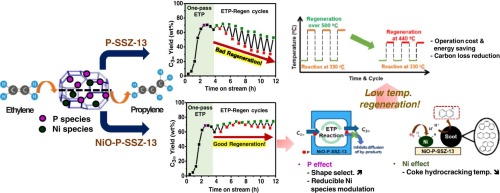
Scientists Create Light-Activated Catalyst for Greener Propylene Production
In a noteworthy advancement towards industrial decarbonization, researchers at Northwestern University have crafted a groundbreaking light-activated catalyst that can generate propylene in a more energy-efficient and eco-friendly manner. This innovation in propane dehydrogenation (PDH) utilizes light rather than fossil fuel combustion to drive chemical reactions, significantly decreasing the carbon emissions linked to the production of one of the most widely utilized chemicals globally.
Propylene and Its Ecological Impact
Propylene serves as an essential building block in the international manufacturing landscape. It is employed to produce polypropylene — a versatile plastic used in packaging, textiles, automotive components, and household items. Annually, over 150 million tonnes of propylene are generated, and the combined global production of propylene and its chemical counterpart, ethylene, is accountable for nearly 900 million tonnes of carbon dioxide emissions each year. A substantial portion of this environmental impact arises from the conventional steam cracking process, which functions at elevated temperatures and heavily depends on fossil fuels.
The Innovation: A Light-Driven Catalyst
To tackle this environmental issue, the Northwestern team engineered a nanostructured copper-platinum alloy catalyst that is activated by light — whether from LEDs or natural sunlight. Copper is recognized for its excellent light absorption properties, especially as a plasmonic metal, while platinum acts as a robust activator of C–H bonds, which are vital in the PDH process. By adjusting the ratio and distribution of the two metals, the researchers optimized the catalyst for superior performance when illuminated.
“The chemical industry relies heavily on energy derived from fossil fuel combustion,” states senior author Dr. Dayne Swearer of Northwestern University. “This study aimed to explore the possibility of using light to drive chemical processes.”
Improved Efficiency and Selectivity
A pivotal discovery of the study is that atomically dispersed platinum — instead of clusters or larger aggregates — greatly enhances the selectivity and efficiency of the catalyst. These solitary platinum atoms function as active sites or ‘reactive hotspots’ that effectively promote the activation of propane’s C–H bonds. Utilizing fewer platinum atoms makes the catalyst more economical and sustainable.
Lead researcher Emma-Rose Newmeyer elaborates: “Previous studies had investigated this specific material, but no one had utilized light to alter the reaction pathways. We discovered that simply activating the laser could reduce the operating temperature by approximately 50°C.”
This reduction in temperature is crucial, as it indicates that the process is predominantly driven by photochemical mechanisms rather than traditional photothermal effects. Essentially, light not only heats the material but also actively modifies the chemical reaction pathway at the surface.
Implications and Future Prospects
These discoveries pave the way for cleaner, low-temperature chemical production. According to Jimmy Faria Albanese, a catalyst materials expert at the University of Twente, the findings are encouraging. “This is a fascinating result that could potentially lead to new reactor designs that lower the overall operating temperature while boosting conversion efficiency.”
The research group intends to expand their focus on materials and target molecules going forward. Newmeyer expresses interest in investigating the light-facilitated conversion of more intricate and harder-to-activate natural gas components, such as methane. Swearer envisions scaling this technology for direct methane conversion processes that might concurrently yield propylene and hydrogen — another valuable industrial chemical.
Challenges Ahead
Despite the promising results, the technology is not yet ready for large-scale implementation. One challenge pointed out by Faria Albanese is the photocatalyst’s limited stability. “The activity appears to diminish significantly over brief periods,” he cautions, “which would likely restrict the use of this system on an industrial scale.”
Enhancing the durability and scalability of the catalyst while retaining its efficacy will be essential for transitioning this method into practical industrial applications.
Conclusion
The development of a light-activated catalyst for propane dehydrogenation signifies a hopeful advancement toward sustainable chemical production. By substituting energy-heavy thermal processes with light-initiated pathways, scientists are moving closer to a future where key industrial chemicals like propylene can be manufactured with significantly reduced carbon emissions. While there are challenges to overcome, this pioneering work establishes a foundation for a cleaner and more energy-efficient chemical industry.